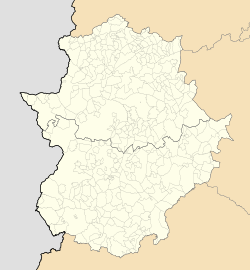
Toledo is a city and municipality of Spain, the capital of the province of Toledo and the de jure seat of the government and parliament of the autonomous community of Castilla–La Mancha.
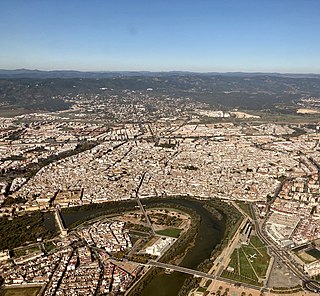
Córdoba, or sometimes Cordova, is a city in Andalusia, Spain, and the capital of the province of Córdoba. It is the third most populated municipality in Andalusia.
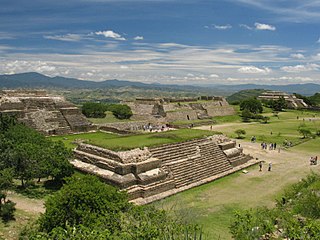
Oaxaca de Juárez, or simply Oaxaca, is the capital and largest city of the eponymous Mexican state of Oaxaca. It is the municipal seat for the surrounding municipality of Oaxaca. It is in the Centro District in the Central Valleys region of the state, in the foothills of the Sierra Madre at the base of the Cerro del Fortín, extending to the banks of the Atoyac River.
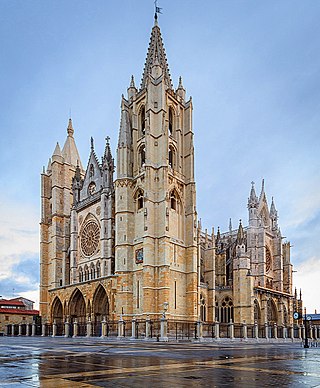
León is a city and municipality of Spain, capital of the province of León, part of the autonomous community of Castile and León, in the northwest of the Iberian Peninsula. It has a population of 124,303 (2019), by far the largest municipality in the province. The population of the metropolitan area, including the neighbouring San Andrés del Rabanedo and other smaller municipalities, accounts for around 200,000 inhabitants.

Trujillo is a municipality located in Extremadura, an autonomous community of Spain in the Province of Cáceres. In 2013 the municipality had 9,086 inhabitants. Originally settled on a granite knoll, which was readily fortified, the town now extends to the southeast of its original site. Trujillo is both a centre for tourism, with more than 25 hotels, and a regional market town.
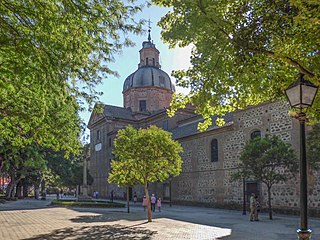
Talavera de la Reina is a city and municipality of Spain, part of the autonomous community of Castile–La Mancha. Its population of 83,303 makes it the second most populated municipality of the province of Toledo and the fourth largest in the region.

Benito Arias Montano was a Spanish orientalist and polymath who was active mostly in Spain. He was also editor of the Antwerp Polyglot. He reached the high rank of Royal Chaplain to King Philip II of Spain. His work was censured by the Spanish Inquisition when rabbinical references were included into his Antwerp Polyglot Bible.
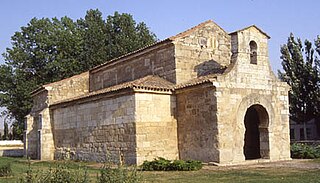
The Visigoths entered Hispania in 415 and they rose to be the dominant people there until the Umayyad conquest of Hispania of 711 brought their kingdom to an end.

Coruña del Conde is a village and municipality in the province of Burgos, Castile and León Spain. The Arandilla River runs through it.

BermudoII, called the Gouty, was first a rival king in Galicia (982–984) and then king of the entire Kingdom of León (984–999). His reign is summed up by Justo Pérez de Urbel's description of him as "the poor king tormented in life by the sword of Almanzor and in death by the vengeful pen of a bishop," Pelagius of Oviedo, half of whose Chronicon covers the reign of Bermudo and is highly critical of the king. He accuses Bermudo of imprisoning Bishop Gudesteus of Oviedo in the 990s and blames the attacks of Almanzor on Bermudo's sins.
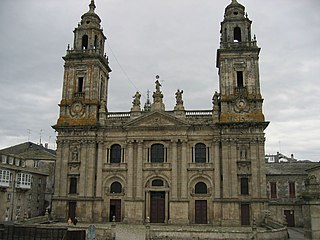
The Roman Catholic Diocese of Lugo is a Latin Church see of the Catholic Church within Galicia, in north-western Spain, and one of the four suffragans in the ecclesiastical province of the Metropolitan Archdiocese of Santiago de Compostela.
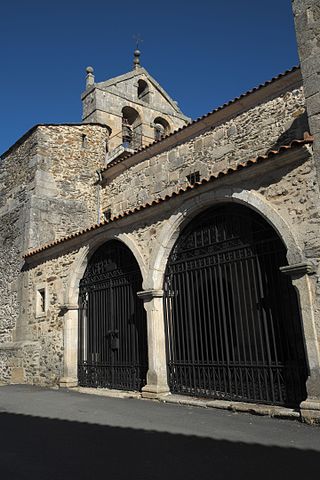
Alcañices is a small town in the province of Zamora, Spain. It is very close to the Portugal-Spain border, not far from the Portuguese town of Bragança. In fact, the Village is especially remembered for being the seat of the Treaty of Alcañices that on 12 September 1297 defined the border between Portugal and the Crown of Castile, the oldest in Europe.
Los Ramones is the name of a municipality and its corresponding seat of government and main population center in Mexican state of Nuevo Leon.

Llerena is a municipality located in the province of Badajoz, Extremadura, Spain. According to the 2007 census (INE), the municipality had a population of 5,995 inhabitants. Llerena, a town that declared itself a Historical Artistic gathering on December 29, 1966, is located in southwestern Spain. The head of the judicial and economic center of the region of the country of the same name, it is equidistant from 20 municipalities, and sits at the confluence of the District 432 and 413 National Roads.

Sierra Suroeste is a comarca located in southwestern province of Badajoz in the autonomous community of Extremadura, western Spain. Its capital and largest city is Jerez de los Caballeros.

The Palace of San Telmo is a historical edifice in Seville, southern Spain, formerly the Universidad de Mareantes, now is the seat of the presidency of the Andalusian Autonomous Government. Construction of the building began in 1682 outside the walls of the city, on property belonging to the Tribunal of the Holy Office, the institution responsible for the Spanish Inquisition. It was originally constructed as the seat of the University of Navigators, a school to educate orphaned children and train them as sailors.
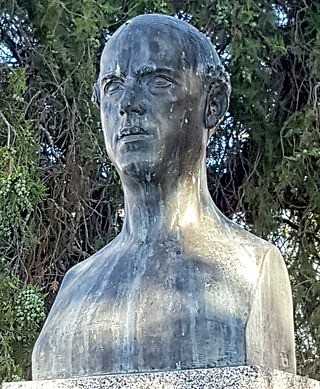
Eugenio Hermoso Martínez was a Spanish painter active in Badajoz. He was a professor of the Real Academia de Bellas Artes de San Fernando, and a contemporary of Benito Arias Montano and Juan Bravo Murillo.

Mixcoac is an area of southern Mexico City which used to be a separate town and municipality within the Mexican Federal District until it was made part of Mexico City proper in 1928.



